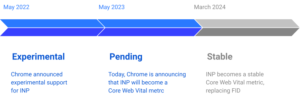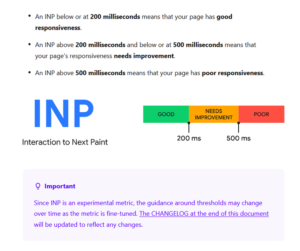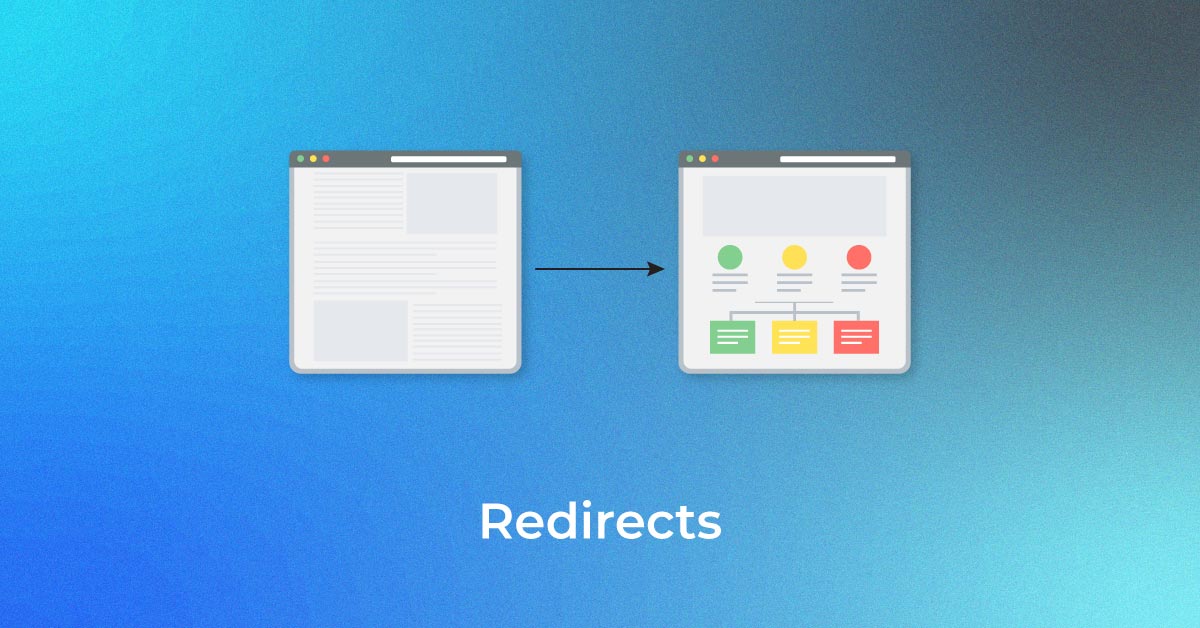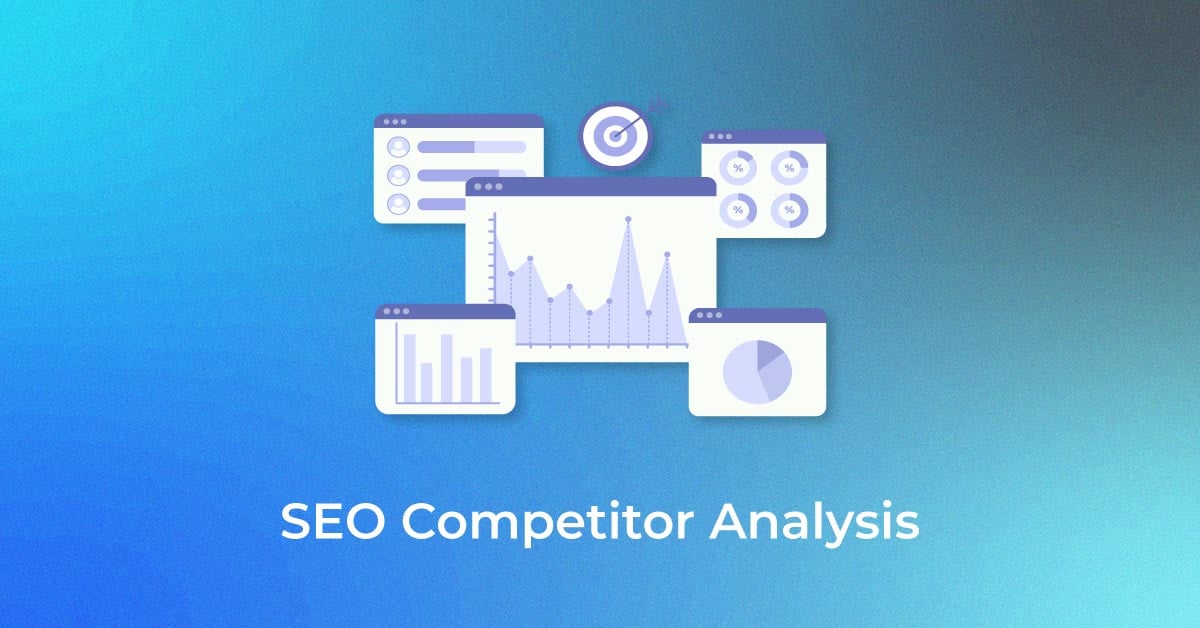In early 2020, Google’s Chrome Team introduced the Core Web Vitals to provide quality signals for web pages.
Google announced at Google I/O on 10th May 2023 Google Introduced New Metric to Measure Website Responsiveness called Interaction to Next Paint (INP) as a Core Web Vital that is set to replace First Input Delay by March 2024.
What is Interaction to Next Paint (INP)?
Interaction to Next Paint (INP) is a performance metric that will evaluate a webpage’s responsiveness to user interactions by measuring the delay of clicks, taps, and keyboard inputs during a user’s visit. Google utilizes INP to assess the usability of online pages. INP leverages information from the Event Timing API.
What is the current status of INP?
After conducting a year-long period of testing and collecting valuable feedback from the community, the Chrome team has made the decision to endorse INP as the new measure for responsiveness within the Core Web Vitals framework. This replacement of FID, which will come into effect in March 2024

INP is a more comprehensive measure of responsiveness than the current Core Web Vitals metric, First Input Delay (FID). FID measures the time it takes for a website to respond to the first user interaction after the page has loaded. However, FID does not take into account subsequent user interactions.
Why will Google replace FID with INP?
In order to more accurately reflect user experience, Google is replacing FID (First Input Delay) with INP (Interaction to Next Paint) as a Core Web Vitals statistic. INP measures the time it takes for a user’s input to result in a visual change on the page, whereas FID measures how long it takes for a user’s first interaction with a web page to register. This modification aims to give consumers a more thorough understanding of how responsive a website is to user inputs and how quickly users may see the results of their activities.
Additionally, INP offers a more accurate and stable way to monitor user experience across various device kinds and network setups. To improve user experience, website owners and developers should give priority to optimizing their web pages for INP.
How is INP measured?
INP will be measured in milliseconds (ms).
Several timing metrics are available via the Navigation Timing API that can be used to gauge how well users are interacting with a website. INP is determined by taking the timestamp of the first user input event (such as clicking a button or entering data into a form field) and subtracting it from the date of the subsequent paint event on the page. The time it takes for the user’s input to cause a visible change on the website is the outcome.
A number of tools, including browser add-ons, web performance monitoring programs, and Google’s own Core Web Vitals report in Google Search Console, can be used to measure INP. Web designers may enhance user experience and overall performance of their websites by tracking and optimizing for INP.
INP will measure the delay of clicks, taps, and keyboard inputs during a user’s visit or interaction.
What will be the Good Score for INP?
For a positive user experience, Google advises that web pages aim for an Interaction to Next Paint (INP) score of 200 milliseconds or less. This indicates that there should preferably be less than 100 milliseconds between a user’s first interaction with the website and the following visual change.
-
A good INP score is below 200 milliseconds.
-
An INP score of 200-500 milliseconds is considered acceptable,
-
An INP score of 500 milliseconds or more is considered poor.
INP can change based on the kind of website or online application, how sophisticated the page is, and what the users are expecting. Aiming for a score of 200 milliseconds or less is a solid general objective, but it’s crucial to take other variables into account that could impact user experience and performance. To enhance user experience, web designers and site owners should periodically check their INP scores.

Conclusion:
INP is a new metric that Google has introduced to measure website responsiveness. INP is a more comprehensive measure of responsiveness than the current Core Web Vitals metric, FID. Google said INP will become a Core Web Vital in March 2024. This means that websites with a poor INP score may rank lower in Google search results.
Popular Searches
How useful was this post?
5 / 5. 1

















